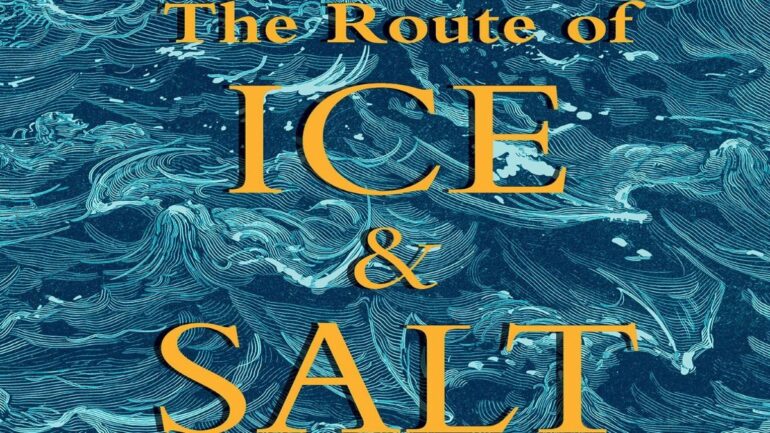The Route of Ice and Salt is a very interesting novella. It first caught my attention with the premise – Dracula, but ‘with gothic imagery and queer desires’. At first I expected a romantic story of affection giving way to deception, similar to Lana Popovic’s Blood Countess.
But what I got was something a lot more enticing.
Written by Mexican author José Luis Zárate, The Route of Ice and Salt was originally released in 1998 – an important year for LGBT rights: same-sex marriage became legalized in the USA, the UK, and the author’s home country of Mexico. Since then, the text has been fully translated by David Bowles and is being republished by Innsmouth Free Press early this year.
The Route of Ice and Salt takes place from the 5th July to the 6th August 1897, with the story centred on the captain of The Demeter. The ship is charged to carry fifty boxes of Transylvanian soil from Varna, Bulgaria to Whitby, England. It seems to be an ordinary assignment, and the first half of the book is a first-hand perspective of the captain longing to explore sexual desires he cannot satiate – to be with his men and lie with them. However, something on the ship begins to terrorize the crew, as each of them are hunted by an unknowing threat.
The book was interesting from start to finish. The prologue is a deep passage of self reflection for the author; Zárate reflects on his own personal experiences growing up and fuelling his fascination for vampirism itself. The afterword from writer Poppy Z. Brite fascinated me, commenting on the links between homoeroticism and vampires; a particular quote he uses from Talia Schaffer’s essay – A Wilde desire took me: the homoerotic history of Dracula – was intriguing:
“The vampire figure therefore fit easily as metaphor for the love that dare not speak its name. To homophobes, vampirism could function as a way of naming the homosexual as monstrous, dirty, threatening. To homosexuals, vampirism could be an elegy for the enforced interment of their desires.”
As for the text itself, the interesting premise is executed well in the storytelling. Admittedly when I first heard about it, I thought the author was a bit daring to write something like this. Then I realised how naïve that was: LGBT themes and vampirism go well together, as well as sex in the horror genre. With that being said, I salute Zárate, because this novella is quite unlike anything that I’ve read, as it brings these themes come together in such a unique manner.
Though it was tragic at times, it was interesting to read from the perspective of someone who is forced to suppress their desires. The captain lives in a society where his desires are vilified to the same extent as vampirism, and though a lot of his thoughts focus on the anxieties his sexuality brings him, it is summarized best in this sentence:
“The true source of fear falls on me like a persistent rain. The same gnawing worry shared by Mikhail and me and all who carry out queer appetites like stigmata. Eyes.”
The only real criticism is the language used in this book. At times, it was a bit too eloquent and I had to reread some passages. Additionally, I should note that the book does have a lot of strong sexual themes, and while it didn’t bother me, it might deter other readers.
However, The Route of Ice and Salt stands as a truly fascinating piece of gay fiction, and is an interesting imagining of the events that occurred on the Demeter.
READ NEXT: 10 LGBTQIA Books To Look Forwards To In 2021
Some of the coverage you find on Cultured Vultures contains affiliate links, which provide us with small commissions based on purchases made from visiting our site.

